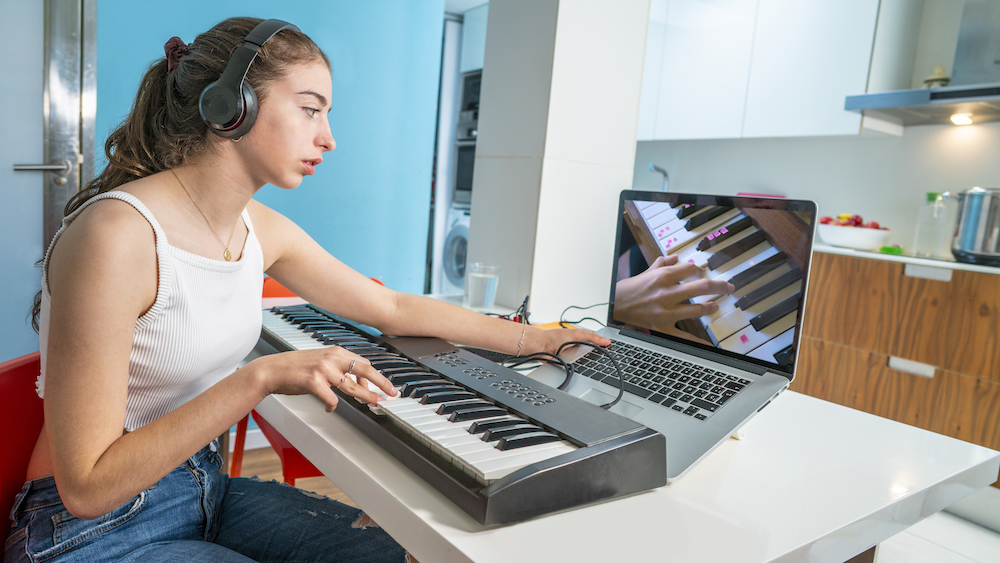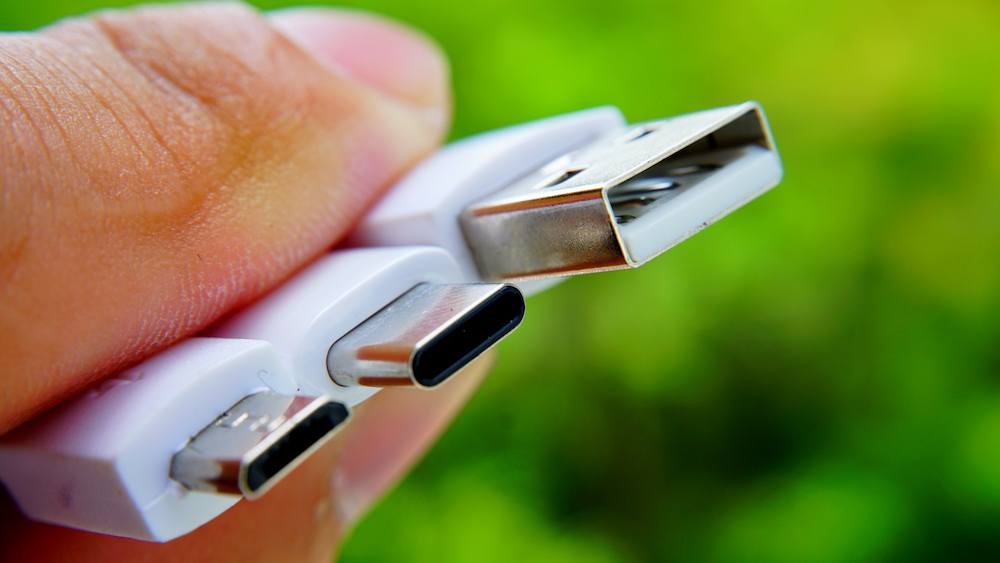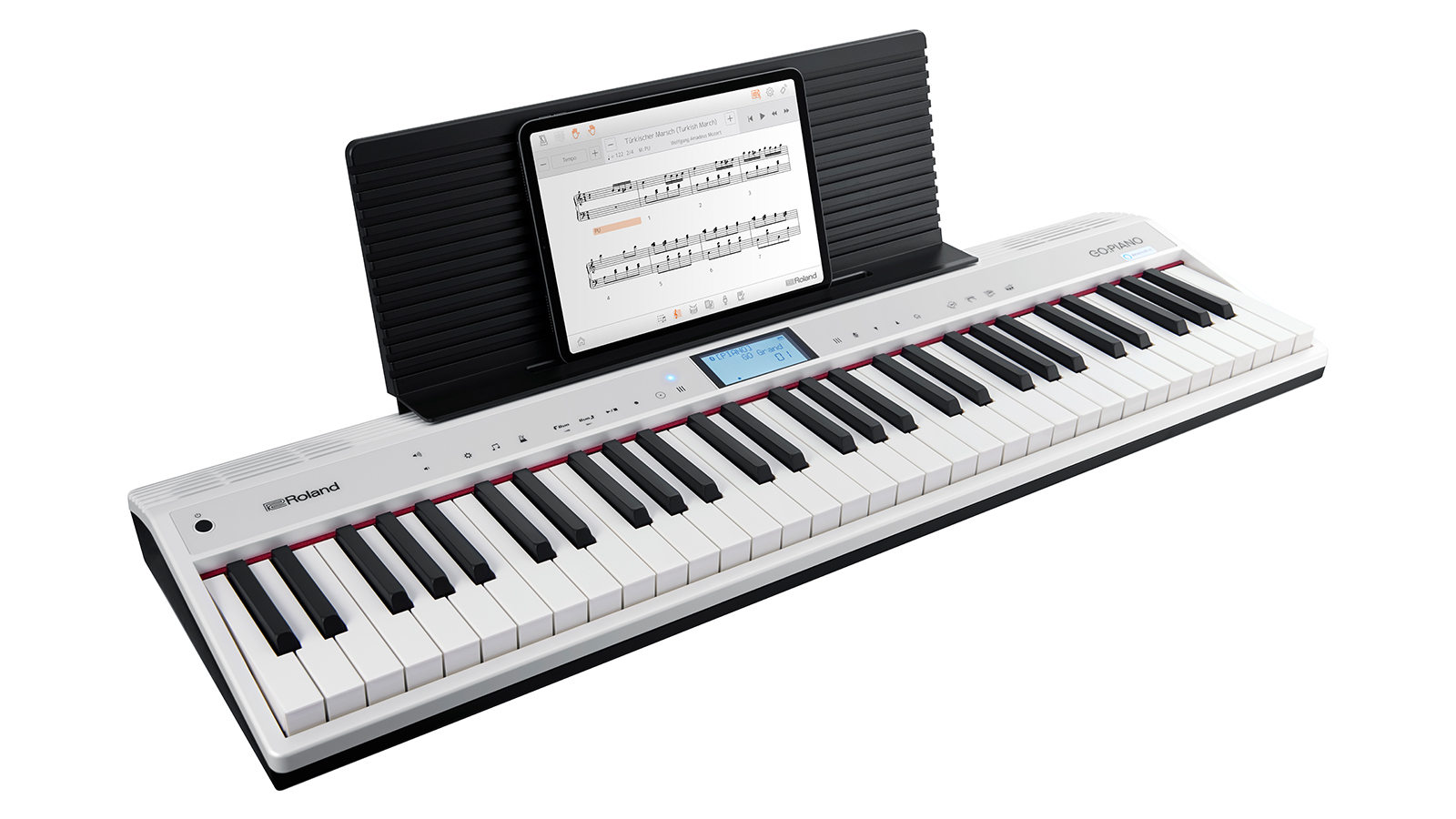How to connect your digital piano to a computer
From recording to interactive lessons, this is the how and why of connecting your digital piano or keyboard to an external device

Modern digital pianos are incredibly sophisticated bits of kit, and for the most part you might think that they’re fairly self-contained. After all, at their most basic level of use, you sit down at them, switch on and start playing piano. Yet although many instruments contain their own built-in features for learning and making music, a digital piano will really start to spread its wings in terms of functionality when connected to a computer.
Be it a Mac, PC or even a mobile device like an iPad or Android tablet, connecting your digital piano to a computer or other external device can open up new features and transform the way you use your instrument in a number of ways. So this guide is here to show you exactly why you’d want to connect your digital piano to your computer, how to actually do it and what this enables you to do.
Why connect your piano to a computer?
The two main types of information that can be passed back and forth from your piano to your computer are MIDI and audio. Short for Musical Instrument Digital Interface, MIDI is a stream of data representing your piano performance converted into numbers. These numbers tell the computer when you played the notes, their pitch value, duration and how hard you played them. Audio data on the other hand is the actual sound of your playing converted into data and passed to your computer in real time.
But why would you even want to connect your piano to a computer in the first place?
The most obvious example is if you wish to use your piano as a MIDI controller keyboard to play virtual instruments within a Digital Audio Workstation (DAW) such as Apple’s GarageBand or Logic Pro, Steinberg’s Cubase or Ableton Live. Not only will this allow you to play software synths and sample libraries installed on your computer directly from your piano keyboard and record your performances, you’ll also be able to access a plethora of online piano lesson services that require you to connect your piano to your computer in order to assess your progress through the lesson plan.

In the case of instruments like the Roland Go:Piano, Bluetooth is used to stream music from an external device such as a mobile phone through the piano’s onboard speakers for you to play along to, which is a fantastic way to encourage teenagers and young children to learn the instrument - the modern equivalent of learning to play by playing along to songs on the radio.
Some manufacturers offer compatible apps that enhance the feature set of your piano or keyboard. A good example is Roland’s Piano Partner 2 app, which connects via Bluetooth to the company’s FP range of beginner digital pianos to provide access to some of the internal settings hidden within the piano, inaccessible from the front panel. This can include access to previously unheard presets, easy control of effects settings and much more, transforming your tablet into a large colour touchscreen display for your instrument and making it far easier to use in the process.
Want all the hottest music and gear news, reviews, deals, features and more, direct to your inbox? Sign up here.
So let’s take a look at how to actually connect a digital piano to your computer. There are two main methods that can be used for this - cabled, and non-cabled, or wireless connection.
Cabled connection

When linking your piano to a computer via a cable, this is most likely to be done with a common USB cable, usually USB-B to USB-A.
What is USB anyway?
Standing for Universal System Bus, USB has been around for donkey’s years as the main connection method between computers and external devices such as printers, external hard drives and cameras. Musicians also use it to connect instruments and other peripherals like audio interfaces and USB microphones to their computers.
There are four common types of USB connector in use today:
- USB-A This is the USB connector format that we’re all familiar with - the rectangular-shaped flat plug that infuriatingly only fits one way into its socket, and is typically always the wrong way up. This connector still appears as standard on many Windows PC’s and laptops.
- USB-B This is the square connector most often found on the other end of the cable from the USB-A plug and is a standard fitting on most USB printers. This is the shape of socket you’ll most likely find on the rear of your piano and is most often labelled ‘USB to Host’.
- USB-C USB-C ports are a more modern connector, typically found on current Apple Mac computers and some PC’s. Resembling a small, flat oval in profile, a USB-C connector can be inserted into its socket either way up, which already gives it a big advantage over its predecessor!
- Micro USB Some smaller beginner keyboards, such as Yamaha’s PSS-A50, may use a smaller format USB connector known as Micro USB. This is popular on smaller devices as it packs the same functionality into a smaller space.
Connecting your digital piano to a computer with a USB cable
We’re assuming that your piano will have a USB-B port, as this is by far the most common type of port for the task. Connection is pretty simple:
- Plug the square end of the USB cable into your piano’s USB-B socket. This square-shaped socket is usually labelled something like ‘USB to Host’.
- Plug the other, rectangular (USB-A) end of the cable into an available USB port on your computer.
The type of USB connector on your computer may vary according to its model and age. Most PC’s still have traditional USB-A ports, but if you’re using a recent MacBook Pro that’s only equipped with USB-C ports, you’ll either need a special USB-B to USB-C cable or an adapter to convert the USB-A plug to a USB-C one.
Alternatively, if all you need is to record the sound from your digital piano as audio into your computer, you can opt to connect your piano without USB by simply connecting your instrument’s audio output jacks to an audio interface attached to the computer. If your instrument has dedicated left and right line outputs, you can use a pair of standard 6.3mm jack cables similar to guitar leads for this - if not, you can use the 3.5mm headphone output and a special cable with a 3.5mm stereo plug on one end and two mono 6.3mm jack plugs on the end that connects to the interface. This will enable you to record the sound of your performance as an audio file in the DAW of your choice.
Non-cabled connection

Wireless connectivity between your piano and your computer is most likely to be achieved via Bluetooth.
What is Bluetooth?
Most commonly found on mobile phones, Bluetooth is a wireless communication protocol that’s used to share data over what are essentially high-frequency radio waves. Bluetooth-enabled pianos are able to communicate with computers and tablets in order to send real-time MIDI data and, more increasingly as time goes on and technology improves, audio data without the need for using cables.
Connecting your digital piano to a computer using Bluetooth:
- Enable Bluetooth on your computer or mobile device
- Enable Bluetooth pairing mode on your piano - see user guide for details
- Select your instrument from the list of available Bluetooth devices on your computer.
Methods for this will vary depending on the make and model of piano you have, but most instruments’ user guides will provide details on exactly how to pair your piano with your computer over Bluetooth. One thing to remember though - Bluetooth audio on pianos is not designed to stream audio from the piano to Bluetooth headphones, as the latency or delay involved in the conversion process will make playing in time practically impossible.
Related buyer’s guides
- Best laptops for music production: portable computers for musicians
- Best budget laptops for music production: cheap laptops for home recording
- Best PCs for music production: Apple Macs and more
- Best iPads for musicians and producers: top Apple tablets for music-making
Dave has been making music with computers since 1988 and his engineering, programming and keyboard-playing has featured on recordings by artists including George Michael, Kylie and Gary Barlow. A music technology writer since 2007, he’s Computer Music’s long-serving songwriting and music theory columnist, iCreate magazine’s resident Logic Pro expert and a regular contributor to MusicRadar and Attack Magazine. He also lectures on synthesis at Leeds Conservatoire of Music and is the author of Avid Pro Tools Basics.
